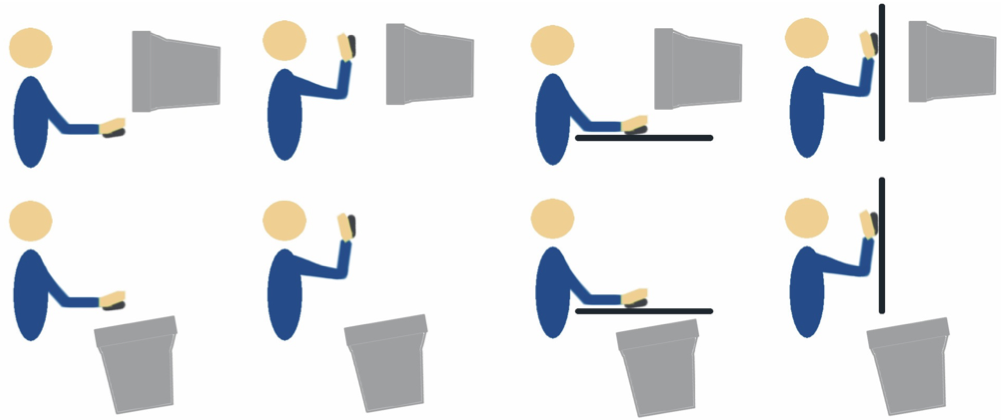
Evaluating Visual/Motor Co-location in Fish-Tank Virtual Reality Inproceedings
Robert J. Teather, Robert Allison, Wolfgang Stuerzlinger
Abstract:
Virtual reality systems often co-locate the display and input (motor) spaces. Many input devices, such as the mouse, use indirect input mappings, and are disjoint from the display space. A study of visual/motor co-location was conducted to determine if there is any benefit to working directly "in" a virtual environment. Using a fish-tank VR setup, participants performed a 3D object movement task. This required moving an object from the centre of the environment to target regions, using a tracked pen, in both co-located and disjoint display/input conditions. Results were analyzed in the context of Fitts' Law, which models rapid aimed movements. Ultimately, no significant differences were found between co-located and disjoint conditions. However, when analyzing object movement in specific directions, the co-located condition was somewhat better than the disjoint one. In particular, movement into the scene was faster when the display and input device were co-located rather than disjoint.
